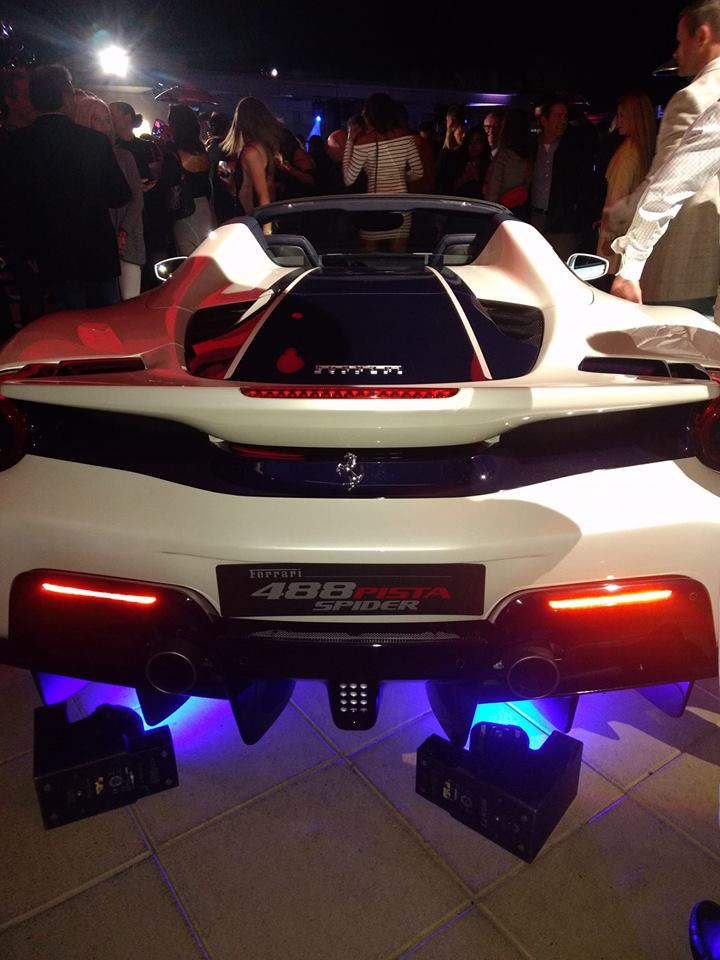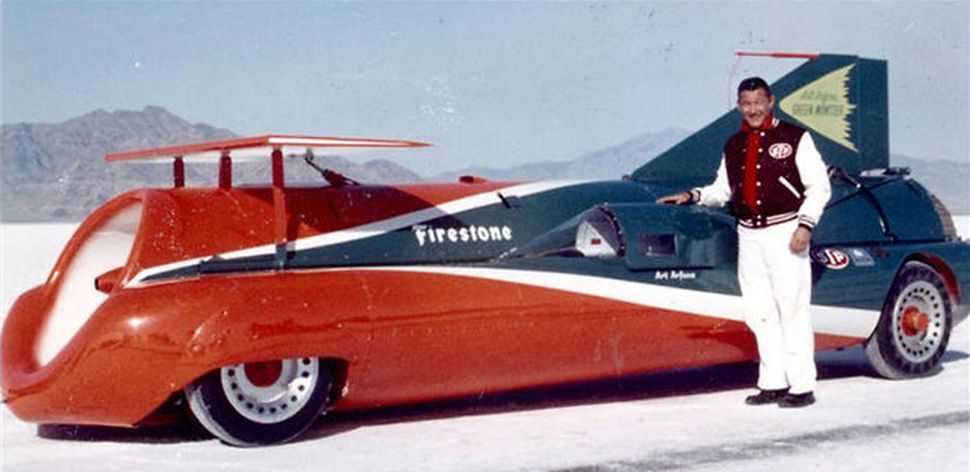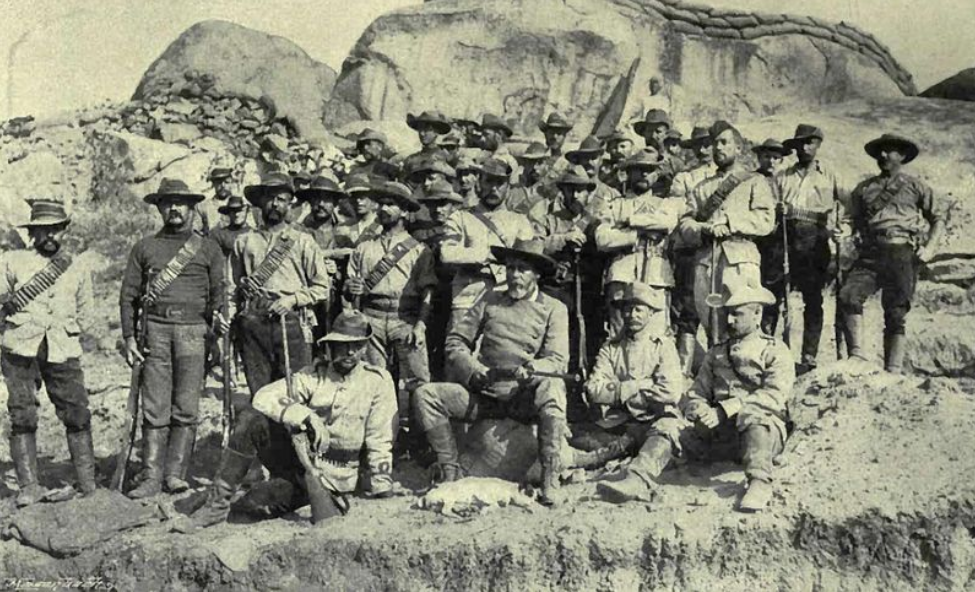“A country’s assets reside in the tinkerers, the hobbyists, and the risk-takers.” — Nassim Taleb
Like any American man of reasonable intelligence, I find a lot to love about the South, especially in its intransigent ways and its lack of respect–for authority in general, but especially for officious pronouncements from credentialed experts and Federal bureaucrats. And its climate. I do in fact live in the north part of Florida. But I was born in Ohio, and there is a part of Ohio in me. In fact one of my ancestors was an early settler of Ohio in the decade right after the Revolutionary War.
And there is… something about the Ohio man’s resourcefulness and inventiveness. There has been a long line of inventors from Ohio. Thomas Edison was certainly not the first, nor the last. Maybe the cold winters and the gray skies drive a man to tinkering in his garage or barn. Maybe there are nobler reasons, but it happens. My own father is the kind of man who never saw a machine he couldn’t fix. Even though he studied medicine and chemistry, he taught himself to be a mechanic, machinist, welder, carpenter, electrician, and bricklayer, among many other skills. He is just a man who enjoyed doing things for himself, in a way that few men are capable of. One of his many interesting jobs, chemist and researcher for Firestone Tire and Rubber in the 1960s, brings us by rather convoluted means to the story of the day.

I was having an Internet argument with friends, and like many arguments among men, this was about cars. One of us had just been to a Ferrari release party, and showed us some truly drool-inducing photos of the 2019 Ferrari line. Of course, there always has to be a naysayer:
“Toyota Supra with some minor upgrades will do everything that Ferrari does, but you can still change the oil yourself. It won’t be as ‘cool’ as the Ferrari, but as Fast & Furious has shown, it’ll still get you the hot chick.” – young Millennial who is for some strange reason allowed in our circle of Generation X friends.
“J*s*s Ch***t… no.. it will not do everything a Ferrari will do. Fast and Furious was roughly as realistic as a country song about super models falling for truck drivers.” — Generation X friend.
This kicked off a typical male argument about relative merits of this or that factor, complete with insults to each others’ intelligence, genetics and heritage. Men do this about sports, cars, economics, literature… well, pretty much pick an area of endeavor. Our young Millennial held to his notion that souping up the engine+aftermarket components could make any decent car the equivalent of a Ferrari, while two of us pointed out the many other factors besides horsepower that affect auto performance: traction control, ground effects, center of gravity, center of mass, tires, suspension, braking. World-class supercars are a symphony of all of the above. You don’t get there just by tinkering.
Our friend disagreed, saying other factors could be dealt with too: “It’s not rocket science. You go for a drive, note what it does, then you make small adjustments. You continue doing this until you’re happy. There are people with less than a high school diploma who do this sh*t quite successfully.”
Me: “It is rocket science. The guys at the top level of car performance are absolutely the equivalent of rocket scientists, if not more.”
Now our friend who had posted the pictures spoke up: “I had a very long conversation last night with Ferrari engineers. It’s literally rocket science. Half these guys are aerospace engineers.”
BOOM, right? Stupid kid thinks anyone can just toy around and do what takes the top auto makers in the world years and whole teams of PhDs and engineers to produce? It’s a ridiculous dream to think that some guy in his garage has any chance of competing, right?
Yes. Well… yes and no. There has always been a back/forth thing between credentialed PhDs and crazy inventors. Not just in car manufacturing but even with rocket science itself. In fact, many of the modern world’s greatest advancements originated from tinkerers, often without even a bachelor’s degree. I knew a friend whose father had built one of the minor land-speed record cars in the 60s, and when some engineers said they would love to see a schematic, his response was “schematic? There is no schematic.”
This got me thinking of one of the greatest car daredevils of all time. So I had to tell our young friend about Art Arfons, and how my father the tire researcher came to meet him.
Cut from the same cloth as fellow Ohioans Wilbur and Orville Wright, Art Arfons was the kind of man completely unfamiliar with the meaning of the word “impossible.” Although born in the city of Akron, Art was a country boy, growing up operating his family feed mill, and generally fiddling with and fixing every mechanical thing he could get his hands on. He came of age in the time leading up to WWII, and ended up in the Navy, using his mechanical skills fixing landing craft in the Pacific Theater.
Like many young WWII veterans, he returned after the war, married, had children and settled into life. Well, for a short while. Then in 1952 he and his half-brother Walt became fascinated with drag racing, and built the first of a long line of cars carrying the designation “Green Monster.” Their mother–the grandmother of Art’s children, far from being disgusted at these boyish antics, loved the sport and supported them any way she could.
Throughout the ’50s, Art and his brother raced drag cars, often as friendly competitors. But Art Arfons was driven to go a little beyond this. By the end of the 50s, he had become interested in the world land-speed records at the Bonneville Salt Flats. He decided he was going to be “the fastest man on wheels”. He built several cars powered by standard internal-combustion engines, reaching respectable speeds in the low 300s. Then he began tinkering with jet power. The first of these vehicles, the “Cyclops” remains to this day the fastest open cockpit vehicle, reaching 330.113 MPH.
But just like Tim Taylor from the Home Improvement, Art was driven by the phrase “MORE POWER”. The smaller jet engine he had used in the Cyclops was just not enough. But he did not have the budget of the teams shooting for the real land speed records. Legends like Craig Breedlove, Tom Greene, or British nobleman Donald Campbell had budgets far in excess of anything this Ohio country boy could imagine. And they had corporate sponsors, while Art was just… Art, and a few buddies.
So he did it anyway. In 1962 he scouted around and managed to find a military surplus store in Miami that was selling a scrapped GE J79 jet engine, the kind used in the F-104 Starfighter. It had been scrapped after a bolt was sucked into the intake and damaged the turbine. Cost: $600. Now… it had not been the intention of either GE, nor the Dept. of Defense, that this engine ever be refurbished. When they discovered what was going on, there were objections, but in America in the mid-20th century, when a man bought a hunk of metal fair & square, it was nobody’s business what he did with it. So Art got to work. Now, due to the above objections, Art was never given any schematics or documentation on the engine. He just had to figure it out via general jet engine knowledge and trial and error.

So: jet engine with busted turbine and no specs? No problem for Art. He disassembled it and found several broken blades on the turbine, which of course would threaten to tear the engine apart due to rotational asymmetry. Art just did the obvious logical thing: he mapped out where each broken blade was, and then took out a blade 360 degrees opposite. In the end, he had a turbine missing a handful of blades, but it was balanced.
How to test a jet engine capable of 17,500 lbs of thrust without a proper wind tunnel? Art mounted it between two large oak trees at his family farm and fired ‘er up! After a few months’ hard work and a few thousand dollars spent on parts, fuel, etc… he had the engine figured out enough to begin mounting it in a vehicle. Again, Art was resourceful. Lying around his grounds and garage he found much of what he needed: a rear axle from a 1947 Ford truck, front axle from a ‘37 Lincoln, steering assembly from a 1955 Packard, and the rest he machined and assembled with his crew of buddies. Once again, he named it Green Monster.
Other pieces were provided as a family effort. His mother helped paint the new vehicle, his wife and some friends sewed up the drag chute meant to slow the car down after a speed run. Rather than buy an expensive Air Force chute ejector, he built his own from a three-dollar 12-gauge shotgun. In fact, this very frugal, resourceful, tinkering approach led to a couple advances in design the big shops had never thought of:
The other competitors had assumed the need for a pointed jet-style nose in front of a center-mounted cockpit, and thus had to construct intake manifolds to suck air from either side into the engine. Art saved hundreds of pounds of weight by putting a cockpit on either side of the engine and simply letting the engine intake BE the nose. No cowling, no manifolds. And it could seat two if desired. Also, rather than construct wings or complicated flaps and fins to keep the vehicle on the ground, Art mounted a single self-adjusting downforce wing near the front.
Now, let’s recap on this situation: So far the expenses were
– about $5000 total spent on the engine
– another few thousand in parts and machining. (Art made his own sheet metal forming machine rather than pay for an expensive factory model.)
– countless hours of hard work
The only thing Art and his crew decided not to handle themselves: the tires. Even the best high-performance auto tires were simply not capable of holding together at speeds of hundreds of miles per hour. For this they went to the nearby headquarters of Firestone Tire and Rubber Company, where my father the researcher was introduced to this “local drag racer who is building a jet car.” My father was part of the team that developed the tires, and Firestone became Art’s only corporate sponsor, contributing an estimated $50,000 worth of R&D to the effort. All told, the budget was still orders of magnitude less than that of any of the favored competitors.

All finished, she was about as ungainly-looking a bird as will likely ever grace the salt flats at Bonneville. Compared to Breedlove’s “The Spirit of America” or Campbell’s “Bluebird”, or even Tom Greene’s “Wingfoot Express”–ironically designed by Art’s half-brother Walt, the Green Monster was basically a jet engine on wheels with a bulbous prow and topped by an ugly rectangular wing that looked like a tractor canopy roof.
Yet in October of 1964, the Green Monster rolled out on the Bonneville Salt Flats and beat them all, being likely the first car to ever reach 600mph, and reaching an official combined speed of 536mph, even though the first half of the run was slower than intended. On the 2nd half, Art gave it his all, and pulled it in with iron nerves in spite of a blowout that should have sent him spinning into the sand. In the words of Harold “Humpy” Wheeler of Firestone,
“Blowouts don’t bother Art…he didn’t panic. He hit the kill button on his steering wheel; this shut down the engine and he coasted to about 500 miles an hour. Then he popped his first chute, and it went all to pieces and jerked the car real bad. He just held onto the steering till the car straightened out, and then he popped the other chute at about 400 and it tore in two, but it slowed him down and at 350 he hit the brakes and burned them out, and he just rode it down on three wheels.”
… ”Just rode it down on three wheels.” At 350mph. You might think this would have been enough for Art, but he was just getting wound up. For the rest of the year, he came back and set new records, driven by the friendly rivalry with Craig Breedlove, who was sponsored by another Ohio company: Goodyear.
“Every time we scheduled a press conference to exploit a new land-speed record on Goodyears, Art Arfons would go out and break our record for Firestone. Every time we’d run a big ad about a record, Art would break our record while the ad was still on the streets.”
– Goodyear spokesman
The full story of the years 1964-66 alone at the Bonneville Salt Flats is enough to fill a book. There is much, much more, but we will now skip to Art’s final attempt in 1966. After twice blowing tires at speeds approaching 600mph, and somehow maintaining control of the Monster, Art’s crew and Firestone had decided to make some modifications for his last attempt of the ‘65 season to beat Craig Breedlove’s new record. They turned out a dual-wheel design for the rear to compensate for the estimated 6000lbs of torque coming down on the rear wheels when the jet powered up only to half speed. This was as far as they had dared to push the engine. However, the extra weight and drag of the wheels sticking out into the airstream kept them 50mph under the speeds they had hoped to reach. Finally, Art decided to start further back than normal: a 3-mile run up to the beginning speed marker, and he opted for double afterburners, when they had only used one up until then.
It is estimated that he was going 610mph when he lost control. A helicopter pilot and photographer watched helplessly from the air as the vehicle rolled twice, belching fire, sending a plume of salt skyward, and in fact sending one tire flying up almost into the rotors of the copter. Then she flipped end over end twice, still going hundreds of miles per hour, landed on her belly and slid for what seemed forever, spraying salt and pieces of fuselage in all directions.
The helicopter, a state trooper and an ambulance all converged on the smoldering pile of metal, knowing in their hearts that they had witnessed the end. They arrived to find the cockpit still attached, although the canopy was long gone, with Art still strapped in and one arm limply hanging over the side. A local radio station was already wording up the story: Art Arfons of Springfield, Ohio… 40 years old, survived by his wife and two children.
“Be careful of my arm. I think it’s broke.” Im… possible. Somehow he was still alive, although obviously badly mangled. He passed out while they tried to figure out how to extricate him. A few minutes later Art’s friend Ed Snyder happened on the scene and figured the worst, walking up crying “Oh Art. Oh no, Art.”
“For Christ’s sake Ed, shut up. I’m OK.” Art was awake again. Supposedly he said to the ambulance driver on the way to the hospital “Just take it easy. I’ve had quite enough excitement for one day.” After all that, It turned out he was only shook up and temporarily blinded from the salt spray. Art Arfons had bounced and skidded for more than a mile, starting at 610mph, strapped to tons of burning wreckage, and come out of it with nothing more than a few scratches and bruises.
Art’s story wasn’t over. Everyone figured he would give up his crazy pursuit now, but he actually built a new Green Monster, lighter, with an improved design. But by now, Firestone had lost their taste for this duel, and refused to sponsor any more land speed record attempts. Art went back to drag racing for a short while, and finally, after a bad accident that left him alive but killed 3 spectators, he left the world of speed behind for good. But, he did not lose his love of machines and power, power, power. He spent the next 25 years making a living in the new sport of tractor pulling, where he again became a legend.
There is a lot more to the story, and many other amazing racers competing in various categories and while this part is about a guy with amazing natural talent, there are plenty of engineers and scientists involved, too. You can read that story: “Speed Duel: The Inside Story of the Land Speed Record in the Sixties” by Samuel Hawley.
It is worth noting that in the 50 years that followed, and billions of dollars and decades of research spent, the current land speed record is 763mph, only 163mph more than the 600mph reached by Art Arfons and Craig Breedlove that one crazy year of 1966.










4.5
5